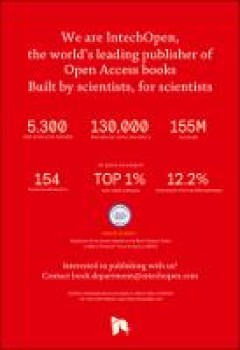Filter by

Chapter Unmanned Aerial Systems
Unmanned aerial platforms are a means to gather efficiently valuable aerial information to support the crisis manager for further tactical planning and deployment. They can provide continuous support to the coordinators and operators by scanning blocked sectors or establish an communication network. This chapter describes how aerial platforms were tailored to search and rescue (SAR) requirement…
- Edition
- -
- ISBN/ISSN
- -
- Collation
- -
- Series Title
- -
- Call Number
- 362 KON c

Menneskelige(re) møter: om samhandling, fellesskap og empati mellom beboere …
"Humanizing Encounters is about the sense of community that exists between persons with dementia. This book is the outcome of a year of ethnographic fieldwork at the specialized dementia care units of two different long-term nursing facilities. Through participatory observation in these units, the author discerned the various ways residents interacted, collaborated and expressed care for each o…
- Edition
- Ed. 1
- ISBN/ISSN
- 9788202727826, 9788202731533
- Collation
- 237
- Series Title
- -
- Call Number
- 362.29 HIL m

Transnational Social Work and Social Welfare: Challenges for the Social Work …
The underlying frame of social work is the nation state, and it is from within the state that welfare strategies and social policies are devised and implemented. However, post-colonialism, globalisation, migration and the associated implications for human rights, social justice and social welfare policies contest the idea of a clearly defined space for social work and present new challenges for…
- Edition
- -
- ISBN/ISSN
- 9781317431190
- Collation
- -
- Series Title
- -
- Call Number
- -

Social Policy Review 35
EPDF and EPUB available Open Access under CC-BY-NC-ND licence. In the latest edition of Social Policy Review, experts review the leading social policy scholarship from the past year. The book addresses current issues and critical debates within the field, with a particular focus on intergenerational research. Published in association with the Social Policy Association, this comprehensive volume…
- Edition
- -
- ISBN/ISSN
- 9781447369202
- Collation
- -
- Series Title
- -
- Call Number
- -

Rent-Seeking in Private Pensions
This book argues that the implementation of compulsory, highly regulated, privately administered, defined contribution pensions facilitates rent-seeking behaviour on the part of the pension fund administrators and undermines the retirees’ income and well-being. While the book focuses primarily on Chile, its analysis and conclusions are applicable to several Latin American and Eastern European…
- Edition
- -
- ISBN/ISSN
- 978-1-137-58035-1
- Collation
- -
- Series Title
- -
- Call Number
- -

International Financial Centres after the Global Financial Crisis and Brexit
This book gathers leading economic historians, geographers, and social scientists to focus on the developments in key international financial centres following the 2008 Global Financial Crisis and to consider the likely effects of Brexit on these centres. Eleven centres in eight countries are taken into consideration: New York, London, Frankfurt, Paris, Zurich/Geneva, Hong Kong/Shanghai/Beijing…
- Edition
- -
- ISBN/ISSN
- 9780198817314
- Collation
- -
- Series Title
- -
- Call Number
- -

Designing Sustainable Clothing Systems The design for environmentally sustai…
The Fashion System is at the center of the international debate as one of the most polluting and most impactful industries on the environment. In the last decade the fashion industry has changed, and is still modifying, its approach, aware of the fact that the attention to the environment can no longer be considered a trend: the entire system needs to find and adopt a methodological approach to…
- Edition
- -
- ISBN/ISSN
- 9788835140115
- Collation
- -
- Series Title
- -
- Call Number
- -

Diversity and Philanthropy at African American Museums Black Renaissance
Diversity and Philanthropy at African American Museums is the first scholarly book to analyze contemporary African American museums from a multifaceted perspective. While it puts a spotlight on the issues and challenges related to racial politics that black museums collectively face in the 21st century, it also shines a light on how they intersect with corporate culture, youth culture, and the …
- Edition
- -
- ISBN/ISSN
- -
- Collation
- -
- Series Title
- -
- Call Number
- -

Transforming Payment Systems in Europe
The European payment market has undergone rapid transformation in recent years due to changes in payment habits, new business rules and new legal frameworks and regulation. There has also been an advent of new technologies and payment solutions which has altered the European payments landscape drastically. This book provides an overview of the fundamental issues involved in this new payments…
- Edition
- -
- ISBN/ISSN
- 978-1-137-54121-5
- Collation
- -
- Series Title
- -
- Call Number
- -

Service Design Capabilities
This open access book discusses service design capabilities in innovation processes, and provides a framework that guides design students, practitioners and researchers towards a better understanding of operational aspects of service design processes. More specifically, it revisits service designers’ capabilities in light of the new roles that have opened up in innovation processes on differe…
- Edition
- -
- ISBN/ISSN
- 2021
- Collation
- -
- Series Title
- -
- Call Number
- -
 Computer Science, Information & General Works
Computer Science, Information & General Works  Philosophy & Psychology
Philosophy & Psychology  Religion
Religion  Social Sciences
Social Sciences  Language
Language  Pure Science
Pure Science  Applied Sciences
Applied Sciences  Art & Recreation
Art & Recreation  Literature
Literature  History & Geography
History & Geography